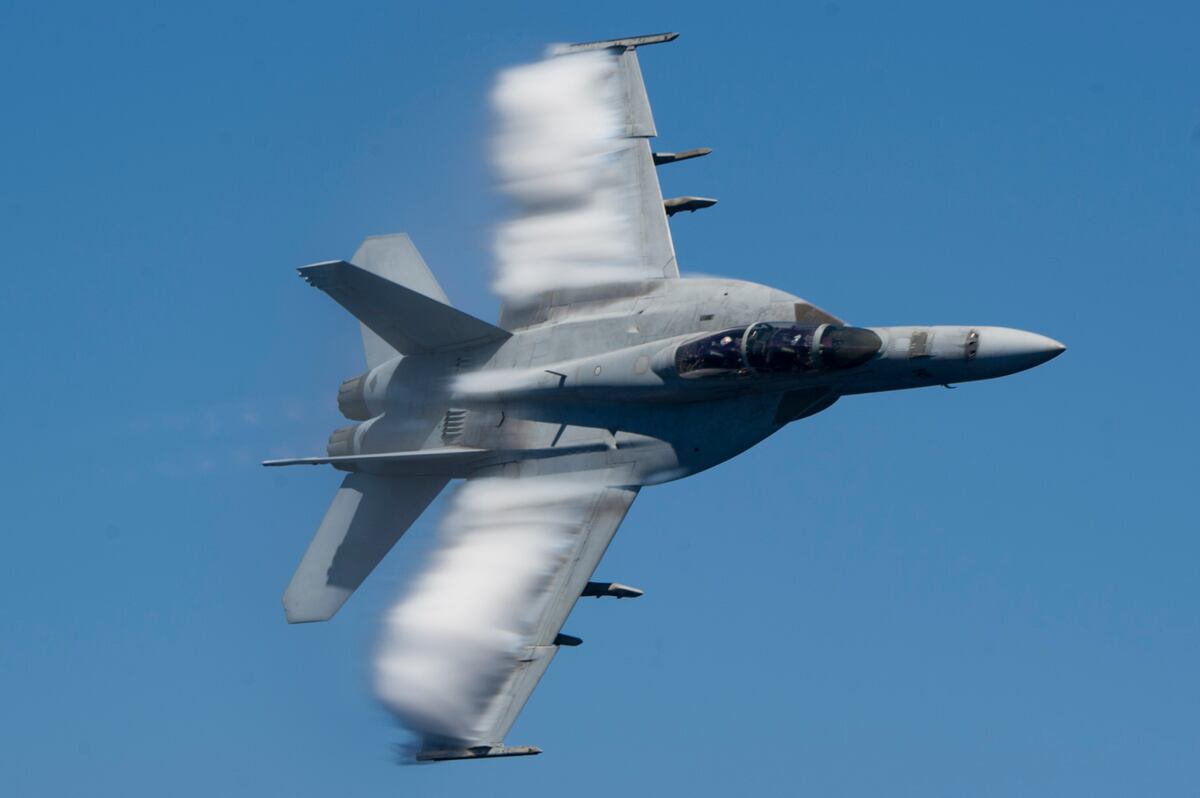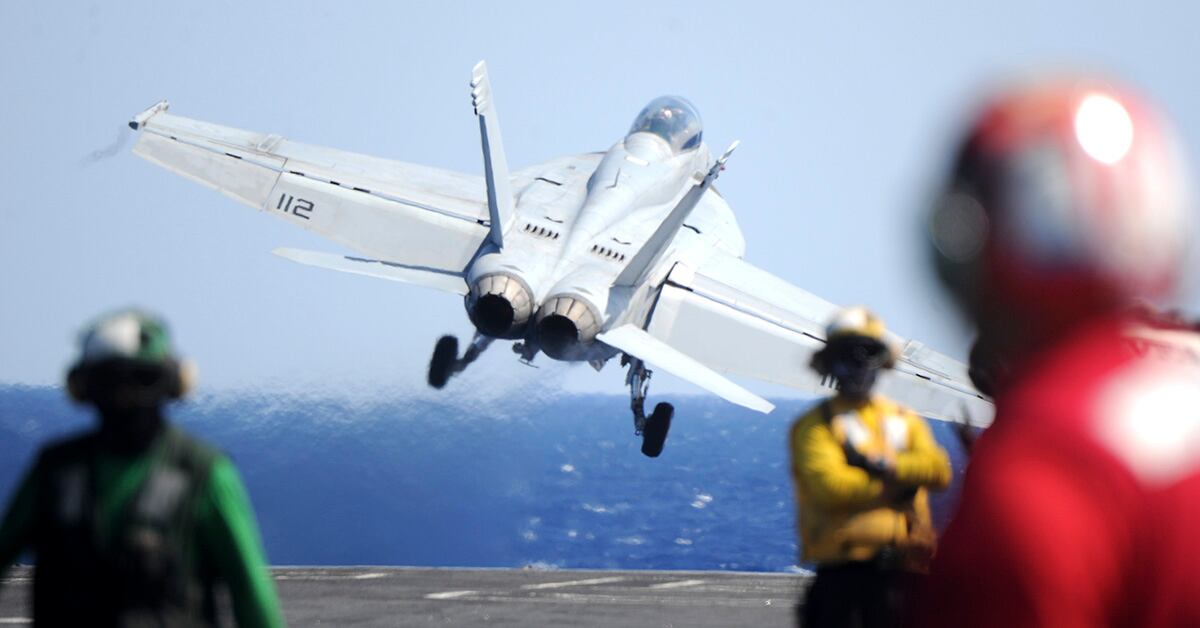The Navy dragooned its dwindling reserves of F/A-18 fighter jets for deploying squadrons, triggering a shortage of backups to plug the gaps when planes go into maintenance, according to a January report from the Defense Department’s Office of the Inspector General.
Much of this shuffling occurred because the Navy failed to plan for the impact of extending the service lives of its Hornet and Super Hornet jets when the next-generation F-35C Lightning II joint strike fighter failed to arrive on time, the report states.
The T-45C Goshawk training fleet faces similar issues, the IG warns, plus the problem of pilots not getting enough training hours in the air.
That creates readiness and aviator retention risks for those who fly both planes, the federal watchdogs wrote.
The IG probed these problems for most of last year and released their findings last month.
While Navy regulations dictate that backup aircraft be used as substitutes when jets undergo maintenance, the IG found that those reserve F/A-18E/F Super Hornets were instead being transferred to squadrons that flew the older F/A-18A/D Hornets.
They were poaching Super Hornet spares because of the chronic delay in next-generation stealthy F-35Cs, which were supposed to start replacing the aging F/A-18A/D jets in Fiscal Year 2012, according to the report.
RELATED

IG determined that the Navy has been swapping out sidelined Hornets for backup Super Hornets since 2010.
Faced with a lack of spares, Naval Air Forces also started shifting aircraft from training squadrons to units readying for deployment, according to the report.
“As a result, there were not enough primary aircraft for training squadrons to complete all training missions with a full squadron,” investigators found.
This lack of aircraft exacerbated an ongoing pilot retention problem bedeviling both the Navy and Marine Corps.
“According to Navy officials, due to the lack of aircraft, pilots were not flying the hours they anticipated and were leaving the Navy and Marine Corps,” the report states.
Pentagon officials acknowledged that “if aircraft shortages continued, the Navy and Marine Corps would not be able to train the required number of pilots,” according to the IG.
“The Navy and Marine Corps could continue to experience aircraft shortages if lessons learned, such as considering the impact of serve life extensions, are not implemented for future Navy and Marine Corps programs including the F-35 aircraft, Next Generation Air Dominance program, and T-45 training aircraft replacement.”
Navy officials concurred with the IG’s findings and pointed to a plan currently underway to boost readiness levels to 80 percent as mandated by former Defense Secretary Jim Mattis.
Last fall, Vice Adm. DeWolfe “Bullet” Miller III, the Navy’s “Air Boss,” began a push to restore readiness in the Super Hornet squadrons worldwide.
Bullet’s blueprint relies on a flood of new funding to fix the planes, plus lasting reforms to maintenance and supply initiatives to make the jets fit to fight tonight.
RELATED

Super Hornets are receiving service life extensions to keep them flying until they can be replaced “with the F-35 and the Next Generation Air Dominance program starting in the 2030s,” the report states.
“Since the Navy did not plan for increased maintenance, there were not enough spare parts and skilled maintainers to keep up with the increased depot demand from (service life extensions) and unscheduled maintenance of the ageing aircraft,” the IG added.
Similar issues are plaguing the T-45C Goshawk, the service’s main jet trainer.
At one point, investigators found that all 22 spare Goshawks were out of commission for maintenance.
“The limited amount of training aircraft available for backup inventory could impact the amount of training pilots receive and the number of pilots being trained,” the report warns.
The T-45 was supposed to be phased out last year, but in 2013 the Navy commenced a plan to keep the training jets flying until 2042, and that service life extension program exacerbated existing problems, according to the IG.
IG counted 24 Goshawks slated to go through service-life extensions from Fiscal Year 2019 to Fiscal 2027, and officials predict they’ll be short at least 21 backup training jets between Fiscal 2021 and Fiscal 2023.
So IG is urging the Navy to plan now on how to keep an aging fleet of T-45 replacements ready for flight.
“The plans should include the effects of delayed replacement programs and extending the service life on aircraft maintenance, spare parts, and aircraft inventory management during replacement aircraft acquisition planning,” IG advised.
Geoff is the managing editor of Military Times, but he still loves writing stories. He covered Iraq and Afghanistan extensively and was a reporter at the Chicago Tribune. He welcomes any and all kinds of tips at geoffz@militarytimes.com.




